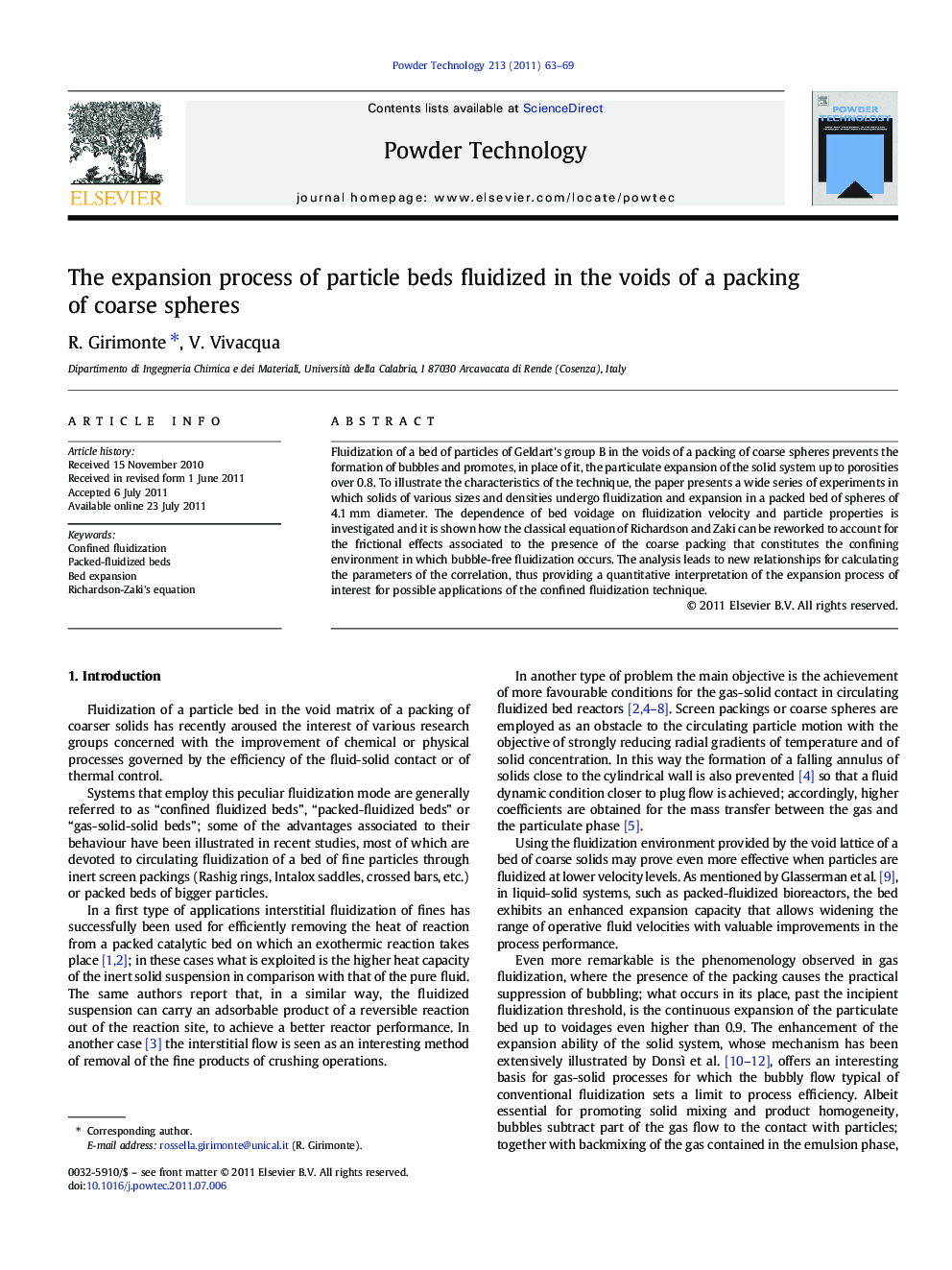| Article ID | Journal | Published Year | Pages | File Type |
|---|---|---|---|---|
| 237458 | Powder Technology | 2011 | 7 Pages |
Fluidization of a bed of particles of Geldart's group B in the voids of a packing of coarse spheres prevents the formation of bubbles and promotes, in place of it, the particulate expansion of the solid system up to porosities over 0.8. To illustrate the characteristics of the technique, the paper presents a wide series of experiments in which solids of various sizes and densities undergo fluidization and expansion in a packed bed of spheres of 4.1 mm diameter. The dependence of bed voidage on fluidization velocity and particle properties is investigated and it is shown how the classical equation of Richardson and Zaki can be reworked to account for the frictional effects associated to the presence of the coarse packing that constitutes the confining environment in which bubble-free fluidization occurs. The analysis leads to new relationships for calculating the parameters of the correlation, thus providing a quantitative interpretation of the expansion process of interest for possible applications of the confined fluidization technique.
Graphical abstractFluidization of a bed of B particles in the voids of a packing of coarse spheres constitutes a technique that prevents bubbling and promotes, in place of it, the particulate expansion up to porosities over 0.8. The analysis of the experiments leads to modify the classical Richardson-Zaki's equation whose parameters are defined on a new basis.Figure optionsDownload full-size imageDownload as PowerPoint slideHighlights► We analyse the expansion of solids of different densities and diameters, fluidized in the voids of a packed bed of spheres. ► We investigate the dependence of bed voidage on gas velocity and particle properties, including those of the packed spheres. ► We offer a quantitative interpretation of the expansion process, modifying the classical correlation of Richardson and Zaki.
